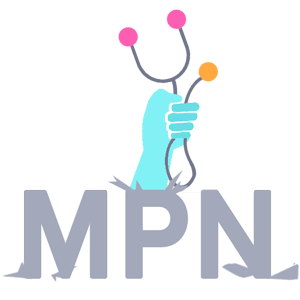5 Myths About Workers' Comp e-Billing

So many doctors avoid worker’s comp, for understandable reasons.
The problems are real and well-documented (especially on this blog). For many doctors, the cost/benefit analysis doesn’t work; the reimbursement simply can’t justify the time and resources required to treat injured workers and bill for their care — even when you factor in how much easier electronic billing makes the whole process.
But all too often, such gloomy analyses rely on myths about workers’ comp and e-billing.
The truth is much sunnier, even considering the challenges. With the right tech, treating injured workers can be more than financially sustainable. Below, we break down 5 of the most popular misconceptions about workers’ comp e-billing.
If any of the myths below are holding your practice back from letting injured workers through your door, please reconsider.
Despite the falsehoods, treating injured workers doesn’t have to be an administrative nightmare — and choosing to e-bill can only make reimbursement happen faster, more accurately, and in a way that’s better documented for the purposes of revenue management.
Myth 1: You Can’t Submit Supporting Documents With e-Bills
Um, yes. Yes you can. And it’s way better than snail-mailing or faxing.
In fact, e-billing is by far the best way to submit the required supporting documentation to the claims administrator. Good e-billing software lets the practice scan and upload whatever documents are necessary (think progress reports, proof of authorization, etc.), for easy, instant transmission along with the e-bill.
That means no chance of documents getting lost in the mail. And as we like to say, there are no worries about documents getting “lost in the cloud” either. Workers’ comp e-billing software should use unique attachment identifiers to correlate each document with its corresponding e-bill.
Once the claims administrator receives the submission and returns the required electronic “receipt,” it is on record and beyond dispute that the claims administrator received the documents. No nonsense denials because someone at bill review claims they never received the documents; it’s all there in black and white.
Myth 2: e-Bills Can Go to Any Clearinghouse
Cue the sound of our heads hitting our desks at a dangerous velocity.
Many, many Revenue Cycle Management (RCM) companies that sell software for billing group health or Medicare tell doctors that e-bills can go to any old clearinghouse, and that someone will somehow make sure the bill gets to the claims administrator.
This is not, has never been, and will (probably) never be so. Using any old clearinghouse will not work.
For each claims administrator/payer, e-bills should be sent with the specific clearinghouse/Payer ID Number combination that constitutes the correct electronic “address” for that claims administrator/payer — which is exactly what daisyBill does.
daisyBill is connected to each and every one of the clearinghouses hired by the various claims administrators/payers to accept e-bills on their behalf, and maintains thousands of payer IDs, one for each claims administrator/payer.
By eliminating indirect routing to a single clearinghouse, daisyBill guarantees your e-bill goes to the right place, and payment comes back faster.
Myth 3: e-Billing Means Credit or EFT Payments Only
For some reason, some practices believe that if the practice bills electronically, the claims administrator cannot pay with a good ol’ fashioned check.
Here’s the good news: your practice can e-bill and accept any form of payment you desire — and you will receive payment much much quicker. For example, in California payment is due in 15 working days, regardless of whether the claims administrator remits a check, EFT, or credit card payment (but we do not recommend accepting credit cards).
Myth 4: You Don’t Need Dedicated Workers’ Comp e-Billing Software
Workers’ comp is not Medicare, and it is not private group healthcare.
Again, many RCM companies assure doctors that their software can work just fine for workers’ comp. This is at best grossly misleading; between the lack of direct connections to clearinghouses noted above, to the inability to include required supporting documentation, what works for Medicare and group health simply cannot be relied upon for workers’ comp.
Workers’ comp is a different game with different — and very complex — requirements. Using a standard RCM to bill for the treatment of injured workers is like using a pool cue for bowling.
Myth 5: You Can’t Get Paid Quickly/Accurately for Workers’ Comp
If we had to put in a sentence why so many doctors stay away from workers’ comp, this would be it.
The belief is that workers’ comp billing is so convoluted, so bedraggled by regulatory requirements, and so corrupt as to be a national embarrassment. And it is! But with e-billing software developed specifically for workers’ comp, your practice can let the software do the work of navigating all the BS.
We have the numbers to prove it: millions of e-bills delivered, with payment in less than 10 days on average. On top of that, the ease with which a doctor can appeal erroneous (or downright cynical) false denials or adjustments means e-billing has saved our clients over $100 million collectively.
Our providers get paid, in full and on time (and when they don’t, we raise hell).
Don’t let any of the fictions above keep you from restoring the health of injured workers. As things stand, these workers have fewer and fewer places to seek care — an avoidable tragedy that e-billing can help put a stop to.
Workers’ comp can work for providers. daisyBill software, data, and expertise makes billing easier, faster, and less costly. Request a free demonstration below.
REQUEST DEMO
DaisyBill provides content as an insightful service to its readers and clients. It does not offer legal advice and cannot guarantee the accuracy or suitability of its content for a particular purpose.

.png)
.gif)
